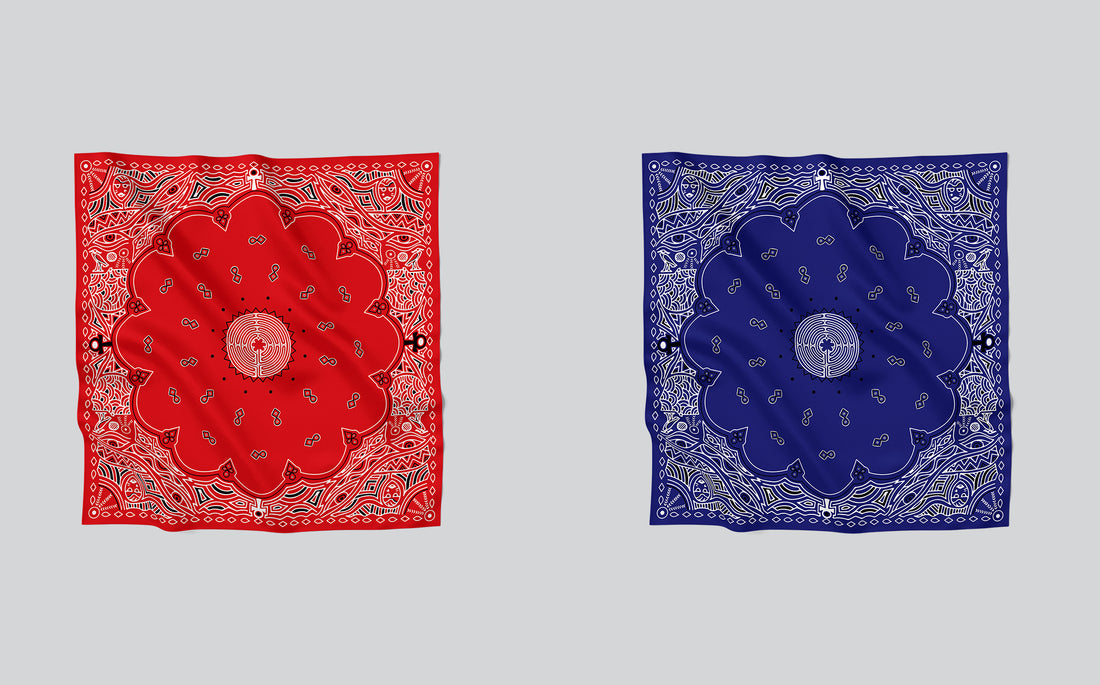The Crips, with their signature blue bandanas, and the Bloods, with their distinctive red bandanas, are two gangs that have made a lasting impact on the history of the United States. This article aims to provide you with an understanding of their origins and the complex narrative that defines their history.
What began as a response to the violence inflicted by the Crips, with the intention of establishing a rival presence, quickly evolved into a criminal organization that thrives to this day, even within the confines of correctional facilities in New York City.
The majority of Americans are fortunate enough to remain unaware of the intricate dynamics of gang culture, the harsh realities of street life, and the adherence to a vital code necessary for survival. Nevertheless, even those on the fringes of society have been culturally exposed to the existence of the Los Angeles Crips and Bloods.
DEFINITION OF GANG
According to Thrasher's social analysis, a gang is a social group that forms spontaneously and solidifies through conflict. It is intriguing to note that the core elements of gang culture, including a strong territorial bond, have remained remarkably consistent throughout the years.
Julia Dunn adds to our understanding by highlighting the evolution of gang culture. In the 1920s and 1930s, gangs were primarily involved in minor crimes like theft and forgery. However, as time progressed, they shifted their focus to more profitable activities such as extortion and gambling, particularly during the 1940s.
BLUE BANDANA : CRIPS GANG
During the 1950s, the vibrant lowrider culture made its way to Los Angeles, bringing with it, a distinctive style and flair. However, it's worth noting that during this time, the weapons commonly used by individuals were primarily knives and baseball bats.
The 1960s witnessed a notable shift in the gang landscape, as more organized and violent groups began to emerge. One such group that originated in South Central Los Angeles was the Crips, who gained notoriety for their involvement in armed activities. This marked a significant turning point in the history of gangs in the area.
The roots of gang activity can be traced back to Los Angeles high school campuses, where various factions began to form, particularly in Compton. Over time, these groups found themselves embroiled in conflicts and rivalries.
In the 1970s, as a means of self-preservation against the numerous Crips gang factions, other gangs and leaderships emerged. One of the notable groups that emerged during this period was the Bloods. They emerged as a counterforce to the Crips and became an influential presence within the gang landscape.
RED BANDANA : BLOODS GANG
In the 1970s, the Bloods distinguished themselves from other gangs in Los Angeles by their involvement in more violent activities and criminal behavior. The gang's roots can be traced back to West Piru Street in Compton.
The initial founders of the Bloods were Sylvester Scott and Vincent Owens, who established the gang under the name Compton Pirus. This was in the same neighborhood where the Crips had already established their presence, leading to intense conflicts between the two groups.
Being outnumbered and outgunned, the Bloods faced brutal attacks, resulting in their significant loss. In response, various smaller groups and gangs that had previously been targeted by the Crips came together and joined forces under the umbrella of the Bloods.
The Bloods embraced the color red as a distinctive identifier, and the red bandana quickly became an iconic symbol of the gang, widely recognized by both members and outsiders.
During the late 1970s, the Bloods solidified their reputation for their relentless and uncompromising demeanor. They asserted their dominance over specific neighborhoods, sparking intense and brutal rivalries with rival gangs.
As the 1980s dawned, the population of Los Angeles witnessed a significant surge in the number of gang members. It is estimated that around 30,000 individuals were affiliated with either the Crips or the Bloods, reflecting the widespread influence and reach of these two prominent gangs.
During the 1980s, the Bloods experienced a notable period of growth and expansion. This was a time when the gang started to recruit younger members, as young as 14 years old, who were required to prove their readiness through acts of violence.
To join the gang, aspiring members often had to engage in physical confrontations with existing gang members and commit specific crimes within predetermined neighborhoods. Alternatively, they could target and assault members of rival gangs.
As the decade progressed, the United States faced the devastating impact of the crack epidemic. The Bloods became deeply involved in the illegal drug trade, a significant departure from their previous focus on neighborhood protection and defending against rival groups. Their involvement in drug trafficking became a prominent aspect of their activities during this time.
In 1983, African American gangs in Los Angeles recognized the opportunity presented by the availability of narcotics, particularly crack cocaine, as a lucrative source of income.
Unfortunately, the economic challenges of the Reagan era had a profound impact on the communities in downtown South Central Los Angeles. Faced with poverty, high unemployment rates, and limited opportunities, the Bloods saw the distribution and sale of cocaine, especially crack cocaine, as a way to attain financial independence and elevate their status within the gang.
As the demand for crack cocaine soared, the Bloods found themselves in a position of financial advantage. By distributing crack rocks within their neighborhoods, gang members could earn substantial amounts of money, ranging from $300 to $500 per day.
Consequently, both the Crips and Bloods gained control over significant portions of the crack cocaine trade across the country. This illegal enterprise quickly outgrew local markets and expanded its reach to cities throughout the nation.
Members would simply announce their arrival in a particular city and gain access to information about local leaders, connections, and protection. This inevitably resulted in a significant surge in violence that was once confined to specific areas of Los Angeles.
The Bloods have expanded their presence across the country and can now be found in most states, including their prison populations. There are numerous individual gangs operating under the overarching names of Bloods and Crips.
Remarkably, the Los Angeles-based Bloods have even established a foothold in New York City, where they exert significant influence within the prison system, including facilities like Rikers Island.
Among the various Bloods factions, the Mac Balla Bloods hold considerable prominence and wield substantial power in New York City, particularly within the prison system. Their activities range from smuggling sensitive information and illegal contraband into city prisons and an upstate jail to the sale of crack cocaine, scalpels, and opioids.
However, the evolution of the Bloods over nearly five decades is not solely characterized by negative aspects. According to Gothamist, in early April, hundreds of current and former Bloods and Crips marched together in solidarity against violence in the South Bronx, demonstrating a united front against such issues.
IMPACT OF GANGS ON FASHION : THE BANDANA
In addition to their influence on gang culture and violence, the Bloods and Crips have had a significant impact on the fashion and style preferences of many young Americans.
They played a pivotal role in popularizing the use of bandanas as a distinctive symbol of gang affiliation. The Crips adopted the blue bandana, while the Bloods proudly displayed the red bandana.
There were various creative ways to wear the bandanna, but some of the most common practices included wearing it around the head like a headband, tucking it into a back pocket, wrapping it around the wrist, or incorporating it into hairstyles.
This trend of wearing bandanas quickly spread beyond the gang circles and reached the broader public, thanks in part to influential figures like rapper Tupac, who embraced the bandana style and helped promote its widespread adoption through their immense popularity.
Today, the bandanna remains a popular fashion accessory, but its use has transcended its origins in gangs. It has become a versatile fashion item for men, with a wide variety of bandanas available to suit individual styles and make a fashion statement.





